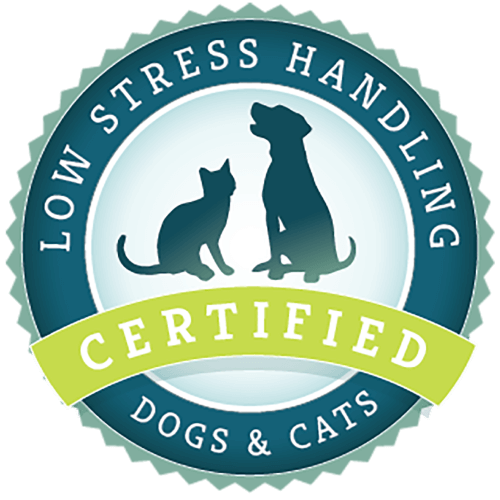What article are you looking for?
Category: I am a…
Organization for Low Stress Success
Having the tools at your side to deliver the Low Stress care experience is important, especially when creating a new culture of care. It is important that the treats, paper bowls, towels and other tools are stocked every night just like the cotton balls, alcohol and syringes.
Low Stress Vet and Tech Communication
In most small animal practices, the intake is done by the technician. Weight check, temp, heart rate, and history are performed by the veterinary technician. With the advances of Low Stress Handling® skills, there may be some variation on how intensive the technician will be in gathering these vital signs prior to the veterinarian stepping into the room. There is acknowledgement of the stress level of the patient, so the technician may forego some of the intake exam to reduce stress and allow the veterinarian to triage care. I always felt it was all fun and games until the doctor
Storm / Noise Safe Room Training
Teach your dog to go to a bathroom, basement, or closet during storms for safety and calming. Getting to the safe room while calm prevents escalation to fear and ensures safety.
Three Great Books for Our Dog and Cat Owners by Preventive Vet
I usually don’t pay much attention to the Facebook ads that pop up on my screen, yet an ad for 101 Essential tips Dog Health and Safety by Jason Nicholas DVM caught my eye. I followed the link and saw that there were 3 books in this series, directed towards the pet owner for pet health and behavior. These books are written by a veterinarian with expertise and experience in emergency and general practice. He clearly sees the need for easy to read, with fun informative illustrations, and accurate information. I ordered each of the books and thought I would share my
Step By Step Guide to Interaction
1. Take the first part of the meal every day for a short 3–5-minute training session. Hold the food in your hand – I prefer not using a treat bag. I want the dog to think at any time I may have a reward not just when I have a treat bag on. Enter Title. [Required] 2. Control release of food – only release food for correct behaviors – no grabbing! Enter Title. [Required] 3. Stand upright – your dog can read what you are going to do Hold 1–3 nuggets between your
“What Did You Say?” – What Your Body Language Says To Your Pet
Train yourself first, in learning what your body language is communicating to your pets and also what their body language is telling you. This is truly one of the most important things that you can do for your pet.

Low Stress Handling® Silver-Level Certification
Individual Certification at this level demonstrates to clients and employers the individual’s dedicated interest in Low Stress Handling®. Hospital Certification at this level demonstrates to clients and staff the hospital’s commitment to appropriately training staff in Low Stress Handling® methods.
Learn More
